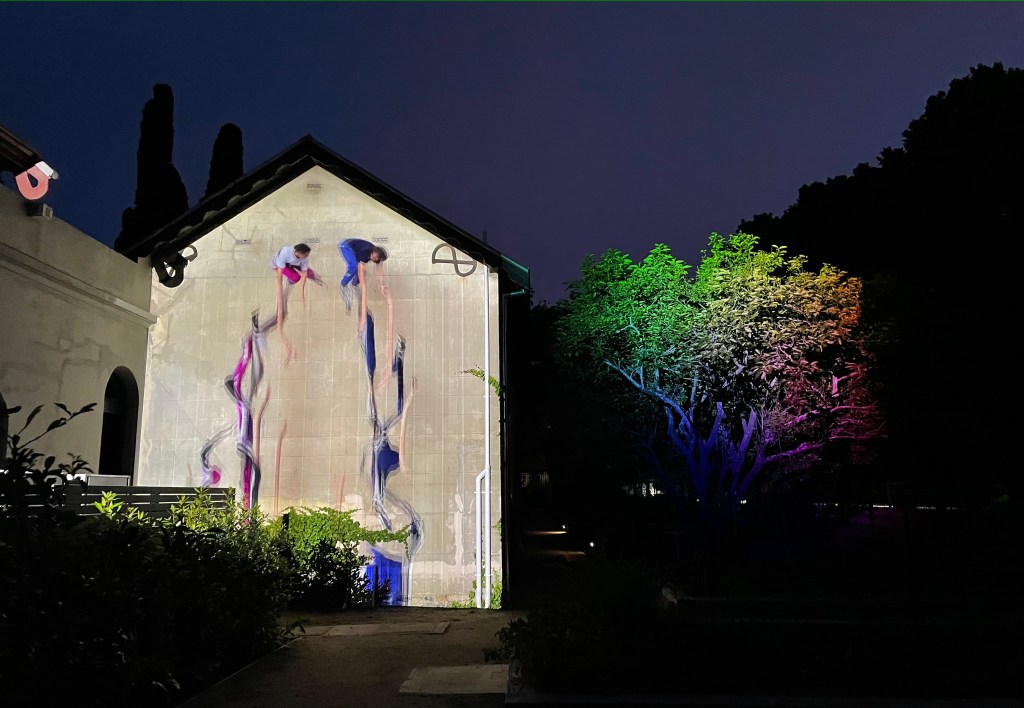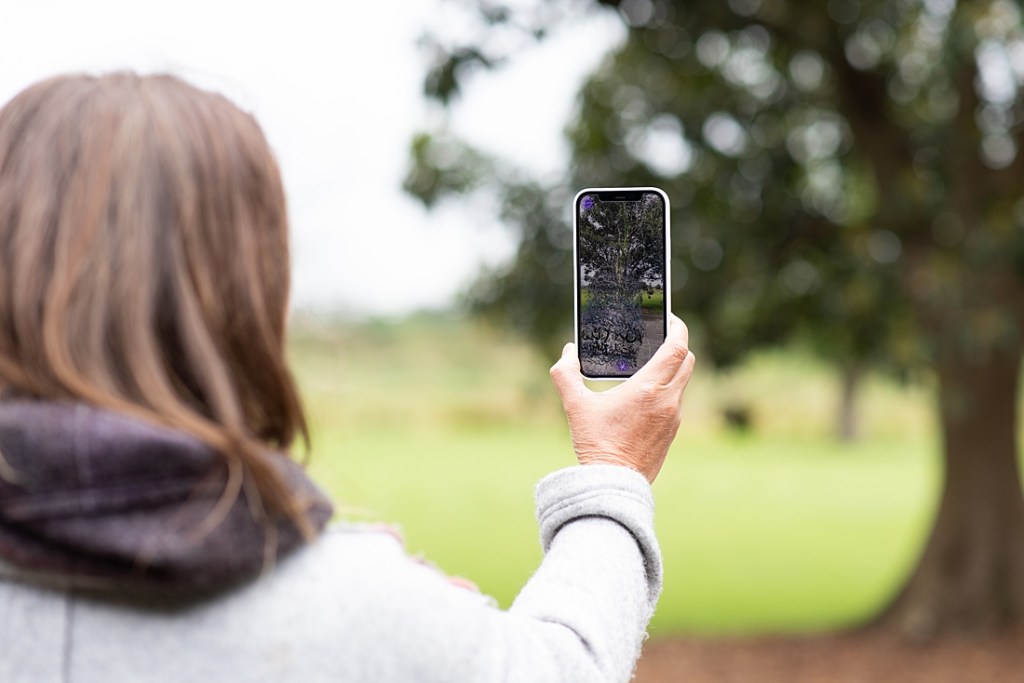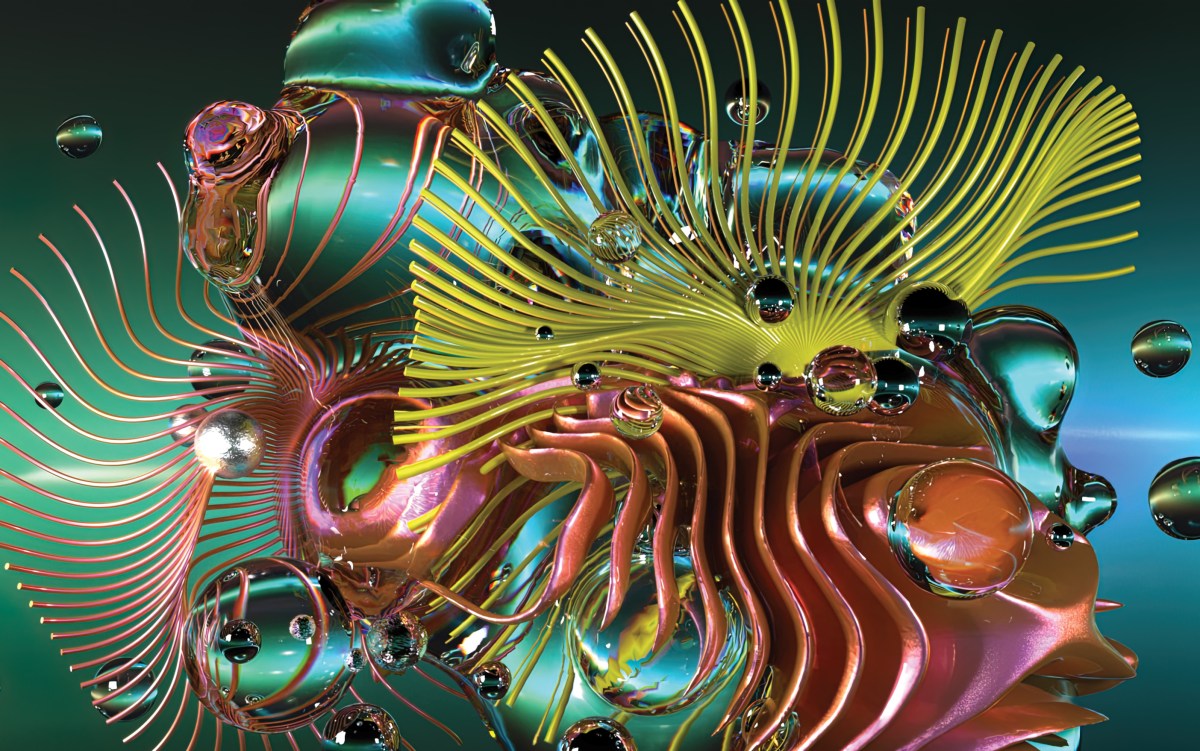IMMERSE 2021 – as its name suggests – breaks the mould by embedding the experience of art in the everyday. It does so by activating unexpected spaces with art, from grand old mansions to majestic parks and village streetscapes.
What that does, says Kim De Kretser Artistic Director of IMMERSE 2021, is break away from the traditional art model and transform the City of Knox into a living art gallery.
‘I believe art should be for everyone,’ she told ArtsHub.
‘Festivals by their nature, and IMMERSE certainly, place art in public realms – in people’s neighbourhoods – so people stumble across it and take ownership of it. It means that next time they may go to that gallery.’
De Kretser believes the pandemic has nurtured a sense of local community and a renewed hunger for IRL (in real life) art experiences, and this has played into the focus of the festival.
‘Public art has the amazing ability to bring a community together, but also to bring topics that need to come to the fore, in a less confronting but more impactful way, allowing the public to work through that but not force a view,’ she said.
De Kretser is not new to the festival, having curated IMMERSE 2017 and managed the festival public program in 2019, for Knox City Council. That experience has allowed the festival to recalibrate for this 2021 edition to combine that reach of experience across five past editions, but also to embed new pandemic learnings.
‘The QR has been great for the arts!’
Kim De Kretser Artistic Director of IMMERSE 2021
De Kretser told ArtsHub: ‘People are much better at using a QR code [today], and it means we can instantly connect, [and] that people can self-guide through the different sites.’
IMMERSE 2021 takes a long-burn approach, embedding itself over an extended period from 20 November to 13 December, unveiling site-responsive installations and digital experiences by 33 artists.
‘It is a kind of slow release, and people can tap into and build their own adventures across IMMERSE.’
This structure means that people will discover the work over a period of time at a pace they feel comfortable with re-emerging.

WHAT ‘HYBRID’ MEANS FOR IMMERSE
Like many festivals in the wake of the pandemic, IMMERSE 2021 has applied a hybrid model.
De Kretser said that while much has changed around the delivery of the festival, and the artworks individually, ‘the artists have been mind-blowingly resilient and really accommodating. It has been a real opportunity for the whole arts and events team and we have learnt so much – things that we will continue to implement.’
While the festival has been unable to utilise the rooms at Millers Homestead – a favoured venue in the past – that connection has been maintained, thanks to our new familiarity and relaxed use of QR codes.
Organisers were able to record a suite of remote audio interviews with artists inside their homes in late September, re-diverting planned public programs into self-guided walking or digital tours, in an innovative way.
De Kretser explained her brief to the performer and interviewer, Will Tait: ‘Create it like you are looking inside the artist’s backpack – we want people to understand the artist, who they are as people, and to feel like they have been chatting with them.’
These short interviews are accessed by QR codes when audiences are roaming around the locations and can be teamed with photographs and films shot when the artwork was installed.

WHAT YOU WILL SEE
De Kretser explained: ‘We don’t set a theme for IMMERSE. This allows for a creative response to the immediate time. This year the pandemic has featured heavily, in a deeply considered, gentle and introspective way.‘
The 33 artists featured at IMMERSE 2021 were selected from over 100 applicants and include both emerging and established artists. A number have emerged from very different non-arts backgrounds, such as engineers and IT professionals.
De Kretser said a great example is Rebecca George, a chemical engineer and artist whose work is featured at Stamford Park, and who has used crochet and materials to visualise the spread of the COVID virus.
Another example, in the majestic grounds of Stamford Park Homestead and The Basin Triangle, is the work of Susannah Langley and Farnaz Dadfar with Warren Armstrong, an augmented reality artwork with virtual reality drawings and sounds experienced via a mobile phone.
The festival, developed by Knox City Council, has been a career springboard for many participating artists, acting as a catalyst to new ways to of evolving their work.
‘And if you can’t get there, you can also experience it in your living room,’ said De Kretser.
‘There is a huge potential for hybrid programs. We don’t want to be online the whole time, but it gives IMMERSE that flexibility to connect.’
Her final word: ‘While stretching your freedom wings, take in some creativity and do something different with your weekend. Artists have incredible minds and have amazing responses on how we have lived with COVID – go out and engage with these amazing spaces and support artists that have been locked away’.
Full program here. IMMERSE 2021 is funded and delivered by Knox City Council and is a biennial event.





